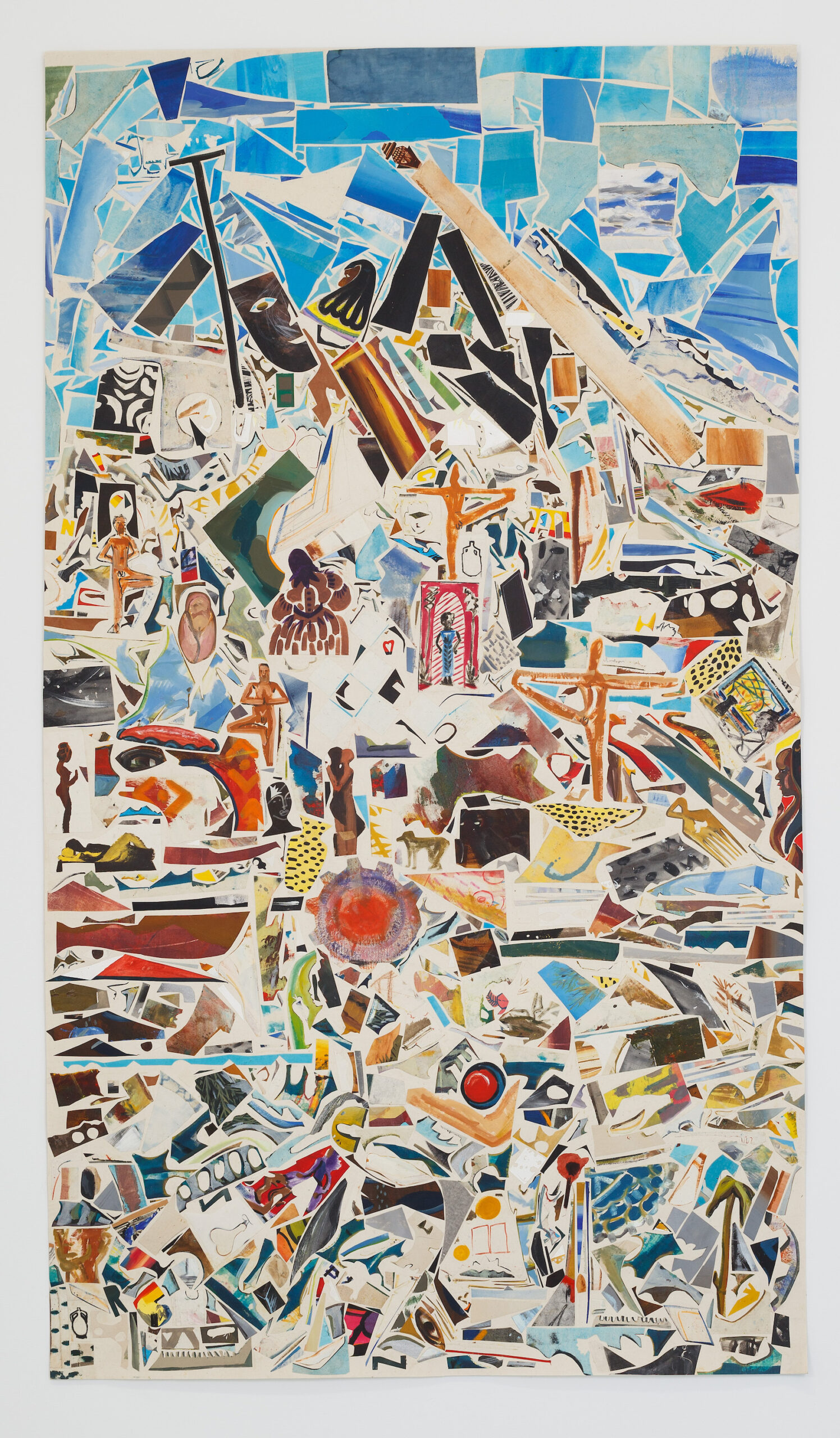Press
Paula Wilson in Hyperallergic
October 27, 2022
Hyperallergic
Thao Votang
Thao Votang reviews Plein Air, a group exhibition featuring Paula Wilson at the Museum of Contemporary Art Tuscon, in Hyperallergic
TUCSON — By noon on a July day in Tucson, Arizona, it’s already 100 degrees and still climbing. Going to see an exhibition at the Museum of Contemporary Art Tucson means visiting as museum hours allow in case the afternoon evolves into a dust storm powerful enough to make masonry and stucco homes creak or a monsoon that turns city streets into rushing waterways.
To step out of that heat and into the cooled air of a museum to see an exhibition titled Plein Air was, at first, ironically humorous. Then it was a sobering reminder of human impact on the environment because going to the museum also meant hoping there wouldn’t be an ozone air pollution warning like there had been for the past three days straight.
Plein Air, guest curated by Aurora Tang, brings together seven artists who use their environments as subject, medium, or setting. In the exhibition text, Tang writes that the outdoors is a “point of departure to consider the ways in which humans use, observe, record, and commune with the land.”
A darkened video room, closed off from the rest of the exhibition, swaddles the viewer. Paula Wilson embodies a goddess-like figure in her 2014 video work “Salty + Fresh.” The frame pans out and reveals the goddess’ extra large painter’s palette and brush. The goddess-artist paints the backs of three live caryatids. These first four figures are all standing in water. The frame zooms out more and a group of picnickers toast and laugh and document the scene in the water with their phones.
The onlookers take on an insidiousness with the knowledge that Wilson filmed the video at Virginia Key Beach, Miami’s historic “colored only” beach. The push and pull of the beach’s history and American culture’s continued struggle with racism repeat in the cuts between the figures in the water and the picnickers on the beach. The people in the water aren’t all Black, and as much as I want to categorize and draw easy conclusions, I can’t assume the figures on the beach are all white. Things are never that simple, which is one powerful aspect of Wilson’s work: the rearrangement of things we’ve seen before so that we can try to see something new.
Susanna Battin uses the US Bureau of Land Management’s Standard Environmental Color Chart as a launch point of her series Leave No Trace (2021–2022). Videos show Battin out in the landscape dressed in the color she’s chosen, then painting a board the same color. Testing the Bureau of Land Management’s suggestion, the artist asks the viewer to wonder whether the painted surface disappears into the landscape. Or does Battin’s dyed clothing better camouflage her?
The series title plays off the camping principles meant to minimize human impact in the wilderness. As Battin’s flat painted boards stick out plainly among the landscape, I think about how humans have trashed Mount Everest and as well as outer space. It seems humans are incapable of entering an environment without impacting it, and Battin’s work highlights how unsuccessful our attempts to mask our presence ultimately are.
Esteban Cabeza de Baca’s painting “How Mora, New Mexico banned fracking” (2022) is a combination of drips and jagged edges of bright blues, greens, and whites that seem to flash with Cabeza de Baca’s crisp linework. Rock, river, mountain, and sky are cut together as if one were looking through a mountain toward another range. The painting’s movement feels like a celebration of a community persevering over a corporation bent on destroying the environment for profit. Even if the success over oil was brief, Mora County banned fracking in 2013, and a judge struck down the ban in 2015, Cabeza de Baca pays homage to the precedent the ban provides for the rest of us.
Similar to Cabeza de Baca’s work, en plein air studies by KB Jones document the oil and gas industries of Oklahoma and West Texas. Hillary Muskin’s series “Incendiary Traces: Survey to Surveillance” (2020-22) explores how 19th-century land surveys have grown into massive databases for surveying people today. Sterling Wells incorporates objects from the landscape into his assemblages. And iris yirei hu transmutes materials and her ideas from the environment she works in into her art, using everything from the earth and her own hair to watercolor and indigo-dyed muslin to present work that calls to mind religious altars.
Plein Air left me wanting more from each artist. As a sampler of works by artists who use the outdoors in their work, the group exhibition succeeds in bringing together multiple approaches and perspectives amid shared themes of questioning borders or regulations as the government tries to control vast swathes of land, and warnings of how oil and gas corporations are poisoning the land and people.
What stuck with me most is how Plein Air pulled together artists grappling with different ways of being in the Southwest with its borderlands, elevations, ecology, and isolation. Each instance has a vast history, community, and knowledge to gain. It makes me eager to learn more and hope that artists all over the world are working this deeply in their regional geographies before it all disappears in fire, flood, or worse.
Plein Air continues at the Museum of Contemporary Art Tucson (265 South Church Avenue, Tucson, Arizona) through February 5, 2023. The exhibition was curated by Aurora Tang.











